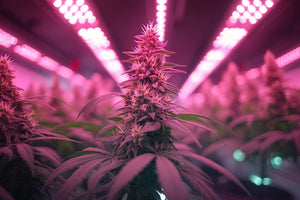
Light is one of the basic elements of plant health and growth. However, in our homes, especially in northern climates, there is a serious lack of light for indoor plants. Indoor plants often have a problem that they do not have in nature: lack of light. Even with good windows, most plants do not get enough light. You must understand that although our house looks very bright, the difference in brightness to the outside world is still very great.
On a cloudy day, we found that outdoor lighting is about 15,000 lux (units of brightness), and we think that a well-lit house is about 500 lux! This means that even rainforest plants growing in the shade of tall trees can enjoy infinitely more light than our home lighting. On the contrary, rest assured that in winter no plant in our house will be exposed to too much light! Therefore, if we want our houseplants to thrive and not be in a semi-dormant state between September and March, artificial lighting is usually necessary!
Light, plant health and growth
Light is captured by pigments in the leaves and plants grow through a plant hormone called auxin. The intensity and quality of light affects the expansion and development of young growing cells in stems, leaves and flowers.
Outside, light comes from all directions and is balanced during the growth process, but inside, especially when the plant is placed against a window, light comes from only one side. This is why growth is usually uneven and it is recommended that each plant is rotated 1/4 turn per week.
brightness
The light intensity corresponds to the amount of lux received by the plant. There is no ideal number of all plants, but the ideal luminosity depends on each plant. To find the answer, it is best to find the answer, but we can reasonably infer the plant's need for light based on its geographic origin. Plants from tropical rainforests certainly do not need cacti in the desert.
Light quality
The best light must still be sunlight, because it can naturally meet all the needs of plants, but not all types of artificial light. The energy particles perceived by humans, called photons, are between 400 and 750, while plants are between 445 and 750.
The energy particles emitted by light bulbs, for example, are between 650 and 700, which is far from meeting human needs. All plants. The best lighting system will be discussed later in this article.
Natural lighting
In winter, south-facing windows provide maximum sunlight, and many plants need windows to grow. In summer, such a display is detrimental to them. Oriental windows are ideal for ferns and Asteraceae. Western windows are sufficient for plants that only need a few hours of sun a day.
As there is no such thing as injection science, we need to do our homework and find out the requirements of each houseplant. At the time of purchase, a small label is usually attached at the factory. It is a good idea to stick this under the pot so that you always have the information you need about sunlight, fertiliser and watering.
Plants will talk to you when the light is low
If the light intensity is insufficient, photosynthesis and growth will be reduced, we will see: pale and smaller leaves, discolored spots, brown or dry yellow plants, weak stems, large internode distance, insect infection, if we water too much, The root will rot, stop flowering, etc.
Duration of artificial lighting
According to the brightness requirements of plants, the lighting time of artificial lamps will be different. For flowers to bloom, such as African violets, they must be lit for 14 to 16 hours a day. Don't shine for 24 hours, because plants will naturally write down the night demand of genes like us. It is best to use a timer because it will be simpler.
Maintenance of indoor plants under artificial lighting
Plants accustomed to natural lighting must adapt to artificial lighting and take some time, at least a few weeks, sometimes several months. Therefore, in the first few weeks of entering the factory in the fall, you do not have to worry about this adaptation. It should also be understood that not all plants come from the same environment. The amount of light in tropical plants is almost the same throughout the year. However, this is not the case with other factories. Other plants come from the winter environment, so you need to rest for a while. Depending on the plants, it is best to put them in a semi-dormant state for more or less time, which means less light, no fertilization, and little watering.
In conclusion
If our budget allows it, it is clear that we must prefer the LED lamp system, especially because these lamps will not heat and consume very little energy, so it is more economical.
Note: Content reprinted from VANQ

